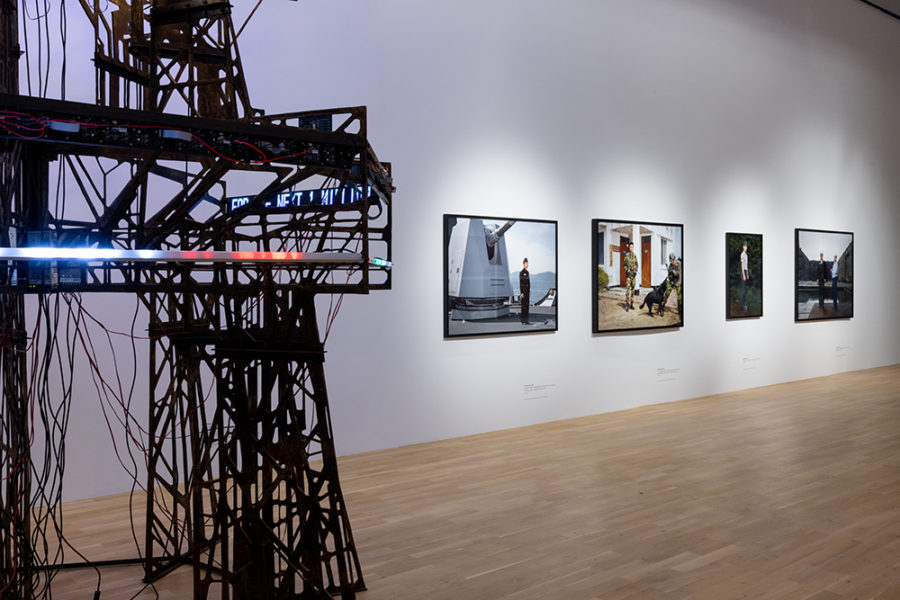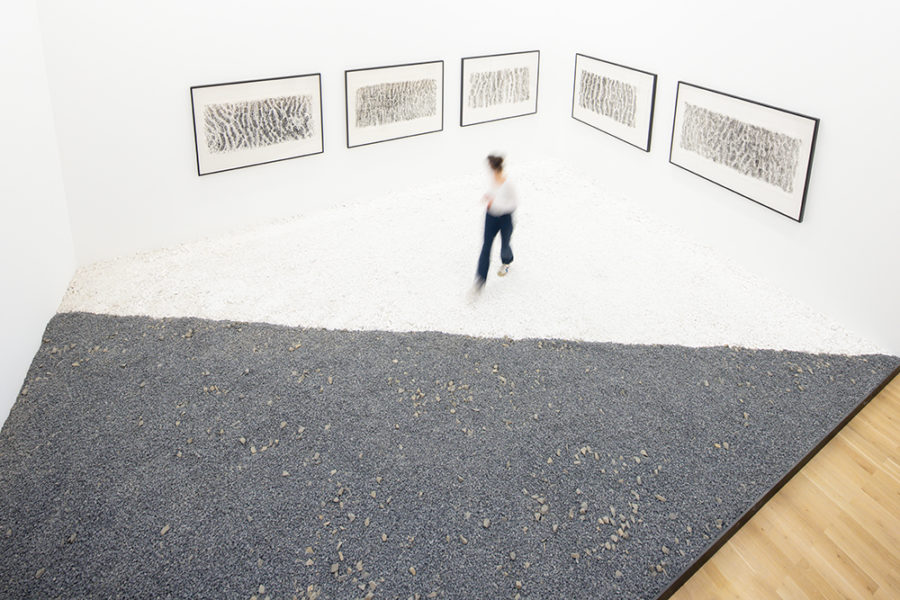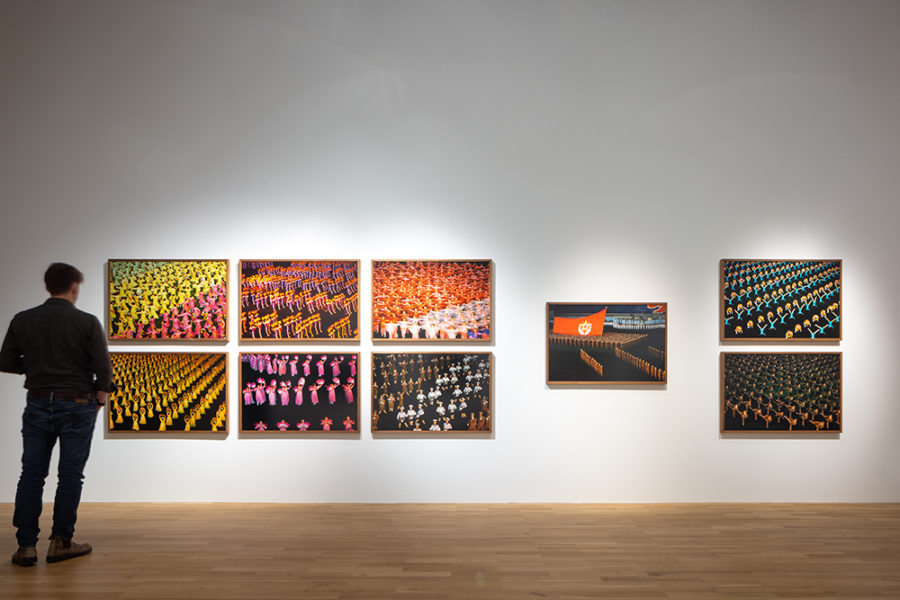Checkpoint
Border Views From Korea
Images
Infos
North and South Korea have been divided for 77 years and separated for 69 years by a strip four kilometers wide and 150 miles long, the Demilitarized Zone (DMZ). It is not only one of the best-secured borders in the world, but also uniquely marks an ideological, cultural and, not least of all, psychological division between the two Korean nations. Whereas the territorial border is widely visible, the mental fissures are almost invisible: hard to describe, but palpable.
North Korea, the DMZ, and the prospect of a possible common future: Based on these three thematic complexes, approx. 35 artworks by both Korean and non-Korean artists from the fields of painting, sculpture, photography, and video are presented, which deal with the politically and culturally complex situation and offer insights into life experiences with visible and invisible borders. Photographs taken in North Korea reveal the psychological distance, as well as almost surreal everyday scenes. Omnipresent surveillance and fantasies about the southern brother state play a role in the artworks, as do mass events to pay homage to the political leadership.
The DMZ itself is examined in various artworks for its divisive and even frightening character. On the one hand,it is an absolute prohibitive zone; and on the other, it is a tourist attraction and a retreat for nature. Stereotypes are questioned, as are separations and re-encounters. In the third chapter of the exhibition, the artistic positions revolve around the prospect of peaceful reunification of North and South Korea.
The research-based REAL DMZ PROJECT was initiated in South Korea in 2011 to use the means of contemporary art to negotiate the various issues of borders and divisions and to develop scenarios for a possible shared future. After venues in London, Paris and Sydney, the REAL DMZ PROJECT Negotiating Borders will be on view under the title Checkpoint. Border Views From Korea at the Kunstmuseum Wolfsburg. Shortly after the thirtieth anniversary of the peaceful German reunification and in geographical proximity to the former inner-German border, the exhibition seems particularly appropriate both temporally and topographically in Wolfsburg.
The exhibition and the accompanying publication are supported by the culture department of the Embassy of the Republic of Korea in Berlin, the Korean Cultural Center as well as the Korean Foundation for International Cultural Exchange (KOFICE) as part of the Traveling Korea Arts Project. The show is being curated and adapted for Wolfsburg by KIM Sun Jung, Seoul. Curatorial Assistance: Sooyoung Choi, Ji Yeon Lee, Ah Rho and Dino Steinhof.
Participating artists:
YOUNG-HAE CHANG HEAVY INDUSTRIES, Chan Sook Choi, Daejin Choi, Kyungah Ham, Sojung Jun, Jane Jin Kaisen, Lee Bul, Jeewi Lee, Woosung Lee, Mischa Leinkauf, Minouk Lim, Aernout Mik, Min Joung-Ki, NOH Suntag, Heinkuhn OH, Park Chan-kyong, Tobias Rehberger, Adrián Villar Rojas, Haegue Yang.
Curator:
Sunjung Kim
Curatorial Assistants:
Sooyoung Choi, Ji Yeon Lee, Ah Rho and Dino Steinhof






